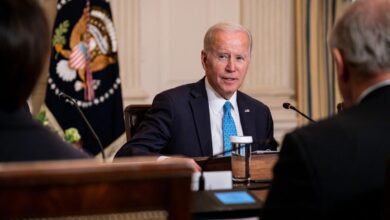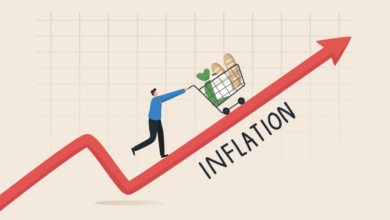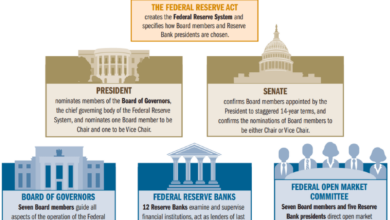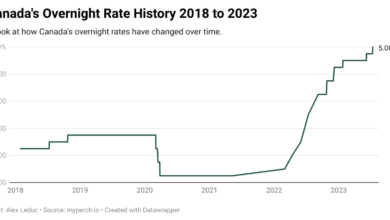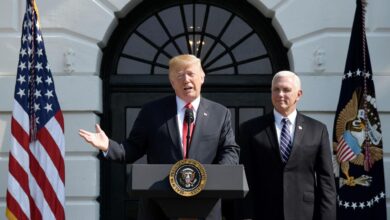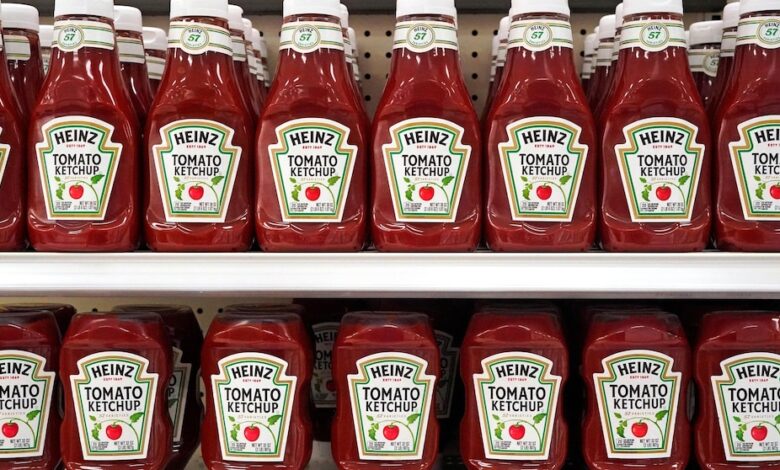
Wholesale Inflation Surges: Highest Increase in 14 Months
Wholesale inflation posts sharpest increase in 14 months, a stark reminder that the battle against rising prices is far from over. This recent surge, a significant jump in the Producer Price Index (PPI), signals a deepening of inflationary pressures across the economy.
While we often hear about consumer inflation, which directly impacts our wallets at the grocery store or gas pump, wholesale inflation represents the price increases businesses face when buying raw materials and supplies. This hidden inflation can ripple through the entire economy, ultimately impacting us all.
The recent spike in wholesale inflation is driven by a complex interplay of factors, including ongoing supply chain disruptions, soaring commodity prices, and the lingering effects of the global pandemic. This surge has businesses scrambling to adapt, grappling with rising input costs and the potential impact on profit margins.
The question now is, how will this ripple through the economy, and what can be done to mitigate the impact?
Understanding Wholesale Inflation
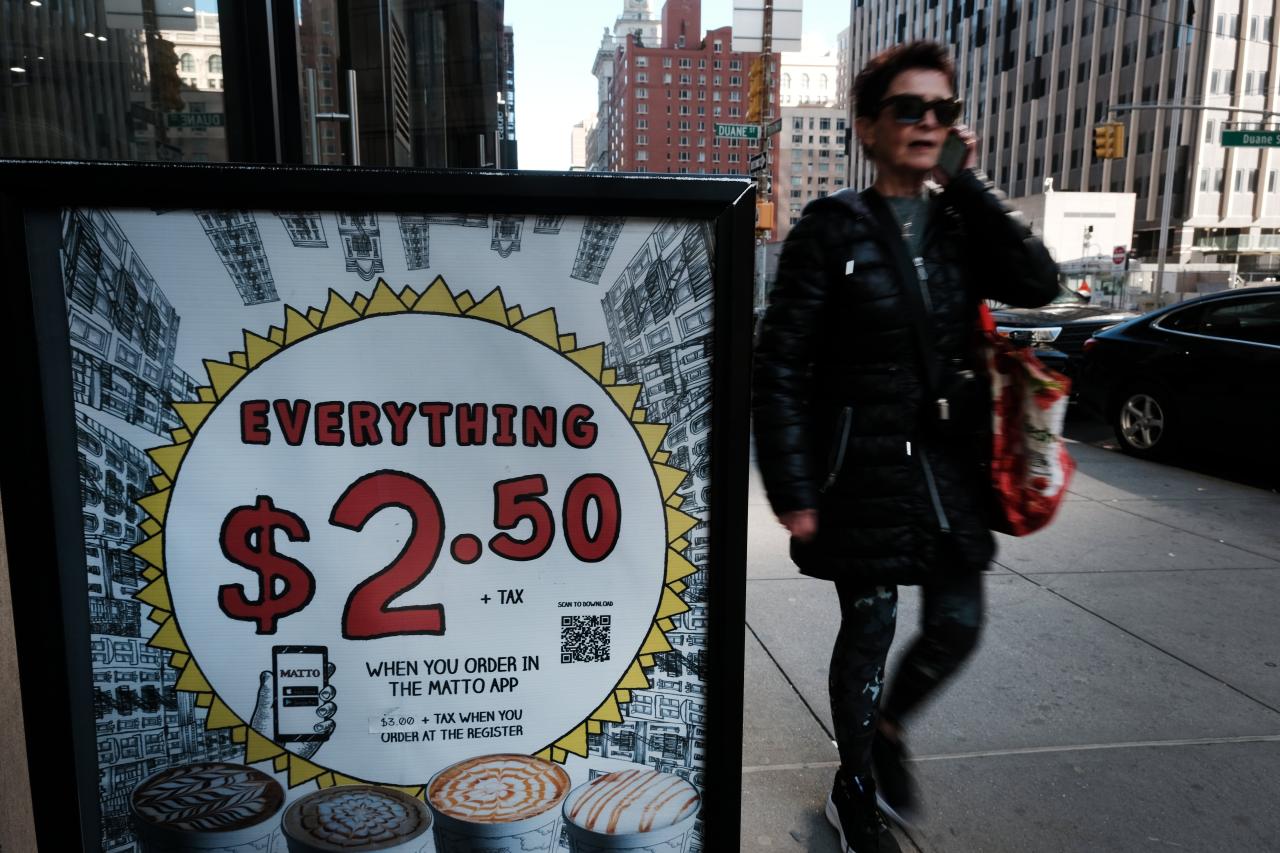
Wholesale inflation refers to the increase in the price of goods and services at the producer or distributor level, before they reach consumers. It is distinct from consumer inflation, which measures the price changes in goods and services purchased by consumers.
While consumer inflation is often used as a key indicator of the overall health of the economy, wholesale inflation provides valuable insights into the cost pressures businesses face.
Goods and Services Included in the Wholesale Price Index
The Wholesale Price Index (WPI) is a measure of wholesale inflation. It tracks the average change in prices received by domestic producers for their output. The WPI includes a wide range of goods and services, categorized into various sectors. Here are some examples of goods and services included in the WPI:
- Raw materials:These include basic materials like crude oil, metals, and agricultural products, which are used as inputs in manufacturing processes.
- Intermediate goods:These are goods that are used in the production of other goods. Examples include textiles, chemicals, and machinery.
- Finished goods:These are products that are ready for sale to consumers. Examples include cars, electronics, and clothing.
- Services:This category includes services like transportation, warehousing, and communication.
Impact of Wholesale Inflation on Businesses and Consumers
Wholesale inflation can have a significant impact on both businesses and consumers. For businesses, rising input costs can lead to:
- Reduced profits:If businesses are unable to pass on the increased costs to consumers, their profit margins will shrink.
- Increased prices:To maintain profitability, businesses may be forced to raise prices for their goods and services, which can ultimately lead to higher consumer prices.
- Reduced investment:Businesses may be hesitant to invest in new equipment or expand their operations if they are facing high input costs.
For consumers, wholesale inflation can lead to:
- Higher prices:As businesses pass on their increased costs to consumers, the prices of goods and services will rise, leading to a decrease in purchasing power.
- Reduced spending:Consumers may be forced to cut back on their spending if they are facing higher prices, which can have a negative impact on the economy.
- Increased uncertainty:High levels of inflation can create uncertainty for consumers, leading to a reluctance to make major purchases.
Causes of the Sharp Increase
The recent surge in wholesale inflation is a multifaceted issue with several contributing factors. Understanding these drivers is crucial for policymakers and businesses alike, as they navigate the challenges of a rapidly changing economic landscape.
Supply Chain Disruptions
The global supply chain has been significantly impacted by the COVID-19 pandemic, leading to bottlenecks, delays, and increased transportation costs. These disruptions have affected the availability and pricing of various goods, particularly those reliant on complex manufacturing processes or long-distance transportation.
- Port Congestion:Ports worldwide have faced congestion due to labor shortages, container shortages, and increased demand. This has led to longer waiting times for ships and increased freight costs. For example, the Port of Los Angeles, a major gateway for goods entering the US, experienced significant congestion in 2021, resulting in higher shipping rates and delays in delivering goods.
- Chip Shortage:The global semiconductor shortage has disrupted the production of various electronic goods, from cars to smartphones. This shortage has driven up prices for these components, impacting the cost of final products.
- Labor Shortages:Labor shortages across various sectors, particularly in transportation and logistics, have contributed to increased costs and delays. This shortage has been exacerbated by factors like worker absenteeism due to COVID-19, immigration restrictions, and aging populations.
Commodity Price Fluctuations
The prices of key commodities, such as oil, natural gas, and metals, have experienced significant volatility in recent months. This volatility is driven by factors like geopolitical tensions, supply constraints, and increased demand.
- Energy Prices:The war in Ukraine has significantly disrupted global energy markets, leading to higher prices for oil and natural gas. The war has also disrupted supply chains for energy-intensive products, contributing to higher input costs for manufacturers.
- Metal Prices:Prices for metals like copper, aluminum, and steel have risen due to increased demand from emerging economies and supply constraints. For example, the rising demand for electric vehicles and renewable energy infrastructure has driven up copper prices, as copper is a key component in these technologies.
Global Economic Events
Global economic events, such as the COVID-19 pandemic and the war in Ukraine, have had a significant impact on wholesale prices. These events have created uncertainty, disrupted supply chains, and led to increased demand for certain goods.
- Inflationary Pressures:The COVID-19 pandemic has led to increased government spending and monetary easing, contributing to inflationary pressures globally. These measures, while intended to stimulate economic recovery, have also contributed to higher prices for goods and services.
- Geopolitical Tensions:The war in Ukraine has added to global economic uncertainty and disrupted trade flows, further exacerbating inflationary pressures. The war has also led to sanctions against Russia, impacting global energy markets and contributing to higher energy prices.
Impact on Businesses: Wholesale Inflation Posts Sharpest Increase In 14 Months
The sharp increase in wholesale inflation presents a significant challenge for businesses across various sectors. Rising input costs directly impact a company’s bottom line, forcing them to adapt and find ways to mitigate the financial strain.
Impact on Profit Margins, Wholesale inflation posts sharpest increase in 14 months
Businesses are facing pressure on their profit margins due to the rising cost of raw materials, components, and other inputs. The ability to pass on these increased costs to consumers through higher prices depends on factors like market competition, consumer demand, and the elasticity of demand for the product or service.
For example, in the food industry, rising prices for grains and livestock have led to higher prices for bread, meat, and dairy products. However, consumers may be hesitant to accept these price increases, potentially impacting sales and profit margins.
The news of wholesale inflation hitting its highest point in 14 months is certainly concerning, and it’s a reminder that we’re living in a time of rapid change. While the economy is on everyone’s mind, it’s also important to note that President Biden has just signed an executive order to ramp up gun control, a move that has sparked debate across the country.
Whether you agree or disagree, it’s clear that we’re facing a lot of challenges, and we need to find ways to address them effectively. Hopefully, these changes will lead to a brighter future, but for now, we’ll have to keep a close eye on the economy and its impact on our daily lives.
A study by the National Federation of Independent Business (NFIB) found that 70% of small businesses reported raising prices in response to inflation in the first quarter of 2023.
Adapting to Wholesale Inflation
Businesses are adopting various strategies to cope with the rising costs associated with wholesale inflation.
- Price Increases:Many businesses are increasing prices to offset rising input costs. This strategy, however, can be risky if consumers are price-sensitive and may choose to purchase from competitors offering lower prices.
- Cost Reduction Measures:Businesses are implementing cost-cutting measures such as reducing waste, negotiating better deals with suppliers, and exploring alternative sources of raw materials. This approach can help maintain profit margins without resorting to price increases.
- Product Innovation:Some businesses are focusing on developing new products or services that cater to changing consumer preferences and offer value for money. This strategy aims to attract customers even in an inflationary environment.
- Diversification:Expanding into new markets or product lines can help businesses mitigate the impact of inflation in a specific sector. This approach spreads risk and provides alternative revenue streams.
Impact on Business Investment
Rising input costs can discourage businesses from investing in expansion, research and development, or new equipment. The uncertainty surrounding inflation and the potential for further price increases can make businesses hesitant to commit to long-term investments.
The news of wholesale inflation posting its sharpest increase in 14 months is certainly concerning, especially as we grapple with the economic fallout of the pandemic. It’s a reminder that we’re still navigating turbulent waters, and the path forward isn’t always clear.
While we focus on these economic challenges, it’s also important to be aware of other issues affecting our society, like the recent iowa woman arrested for voter fraud scheme. These events highlight the need for vigilance and responsible citizenship, particularly in times of uncertainty.
As we strive for economic stability, it’s crucial to maintain a watchful eye on all facets of our society and ensure that our institutions are functioning with integrity.
A survey by the U.S. Chamber of Commerce found that 60% of businesses are delaying or scaling back investment plans due to inflation concerns.
Government and Business Responses
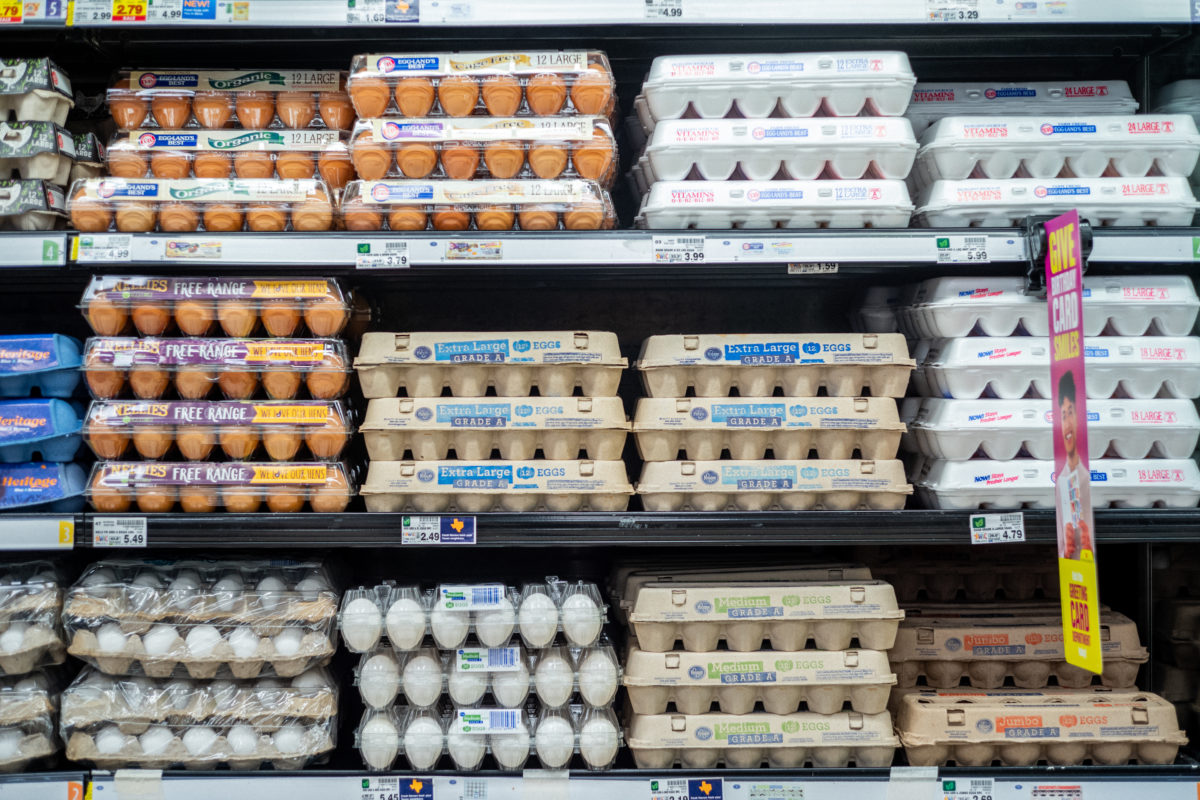
The sharp increase in wholesale inflation has triggered responses from both the government and businesses. Governments are implementing various policies to mitigate the inflationary pressures, while businesses are adapting their strategies to manage rising input costs. This section examines the effectiveness of these responses.
The news of wholesale inflation hitting its highest point in 14 months is a serious concern, especially when you consider the importance of agriculture in our economy. It’s good to see Florida taking steps to protect its citrus industry, by preventing foreign buyers from snapping up valuable farmland.
Hopefully, these measures will help to ensure the long-term sustainability of this crucial sector, even in the face of rising inflation.
Government Policies to Address Wholesale Inflation
Governments play a crucial role in stabilizing the economy during inflationary periods. They can implement a range of policies to control inflation, including:
- Monetary Policy:Central banks can raise interest rates to make borrowing more expensive, slowing down economic activity and reducing demand. This can help curb inflation by decreasing the pressure on prices.
- Fiscal Policy:Governments can reduce spending or increase taxes to decrease the amount of money in circulation, thereby lowering demand and inflation. This can involve cutting government programs or raising taxes on individuals and businesses.
- Supply-Side Measures:Governments can implement policies to increase supply and reduce bottlenecks in the economy. This can involve reducing trade barriers, promoting domestic production, and investing in infrastructure to improve efficiency.
- Price Controls:Governments may impose price ceilings on essential goods to prevent excessive price increases. However, this can lead to shortages and distortions in the market.
The effectiveness of these policies depends on various factors, such as the severity of inflation, the flexibility of the economy, and the political will to implement them.
Business Responses to Rising Input Costs
Businesses are facing the challenge of rising input costs, which can significantly impact their profitability. They are employing various strategies to mitigate these pressures, including:
- Price Increases:Businesses can pass on increased costs to consumers by raising prices. However, this can lead to a decline in demand if consumers are unwilling to pay higher prices.
- Cost Reduction Measures:Businesses can seek to reduce costs by improving efficiency, negotiating better deals with suppliers, and finding cheaper alternatives for raw materials.
- Product Innovation:Businesses can develop new products or services that are less affected by rising input costs. This can involve finding substitutes for expensive raw materials or developing more efficient production processes.
- Diversification:Businesses can expand into new markets or product lines to reduce their reliance on a single source of revenue. This can help them spread the risk of rising input costs across a wider range of products and services.
The effectiveness of these strategies depends on the specific industry, the competitive landscape, and the overall economic environment.
Effectiveness of Response Strategies
The effectiveness of government and business responses to wholesale inflation depends on several factors, including:
- Timing and Coordination:Timely and coordinated responses from both governments and businesses are crucial to effectively manage inflation. Delays or conflicting policies can exacerbate the situation.
- Transparency and Communication:Open communication and transparency are essential for building trust and confidence among stakeholders. Clear explanations of policies and actions can help to mitigate concerns and encourage cooperation.
- Flexibility and Adaptability:The economic environment is constantly evolving, and response strategies must be flexible and adaptable to changing conditions. Regularly monitoring the situation and adjusting policies as needed is crucial for success.
Long-Term Implications
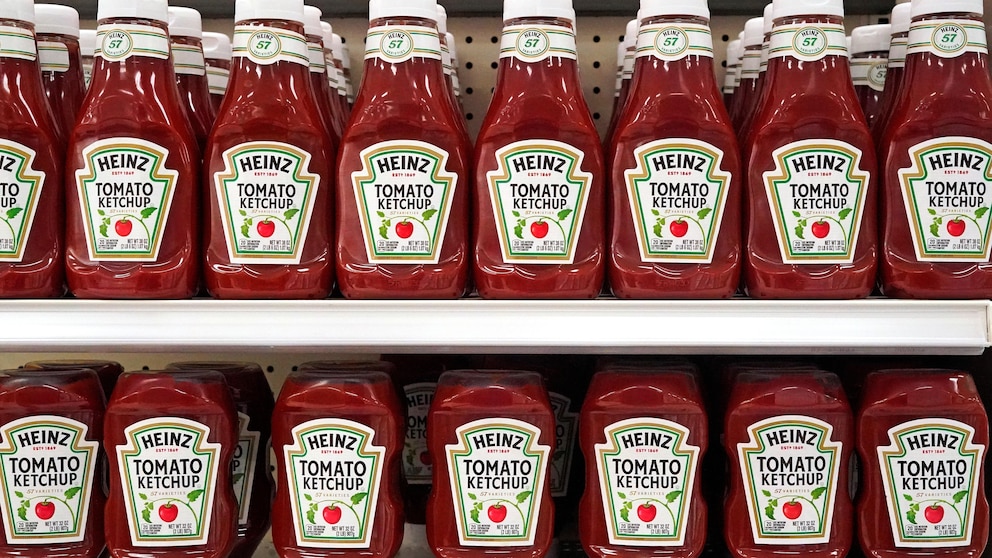
Wholesale inflation, if persistent, can have far-reaching consequences for the economy, impacting consumer behavior, business strategies, and government policies. Understanding these long-term implications is crucial for navigating the potential challenges and opportunities that arise.
Impact on Consumer Behavior and Spending Patterns
Persistent wholesale inflation can significantly influence consumer behavior and spending patterns. As prices rise, consumers may experience a decrease in purchasing power, leading to adjustments in their spending habits.
- Reduced Discretionary Spending:Consumers may prioritize essential goods and services, reducing spending on non-essential items. For example, they might delay purchases of new cars or vacations, opting for cheaper alternatives instead.
- Increased Savings:To mitigate the effects of inflation, consumers may choose to save more, leading to a decline in overall consumer spending.
- Shifting Consumption Patterns:Consumers may switch to cheaper alternatives or brands, leading to changes in market demand. For instance, they might choose generic brands over premium products or opt for smaller quantities of goods.
Challenges and Opportunities for Businesses
Wholesale inflation presents both challenges and opportunities for businesses. While rising input costs can impact profitability, it also creates opportunities for strategic adaptation and innovation.
- Cost Management:Businesses must implement effective cost management strategies to mitigate the impact of rising input costs. This may involve renegotiating supplier contracts, exploring alternative sourcing options, or implementing cost-saving measures.
- Price Adjustments:Businesses may need to adjust prices to maintain profitability. However, excessive price increases could alienate customers, leading to a decrease in demand.
- Innovation and Differentiation:Wholesale inflation can incentivize businesses to innovate and differentiate their products or services. By offering unique value propositions or cost-effective solutions, businesses can gain a competitive edge.
Challenges and Opportunities for Policymakers
Policymakers face the challenge of managing the economic impact of wholesale inflation while balancing competing priorities.
- Monetary Policy:Central banks may use monetary policy tools, such as raising interest rates, to control inflation. However, this can also slow economic growth and increase borrowing costs for businesses.
- Fiscal Policy:Governments may use fiscal policy tools, such as tax cuts or spending programs, to stimulate the economy. However, this can lead to higher budget deficits.
- Supply Chain Management:Policymakers can work to improve supply chain efficiency and reduce bottlenecks to mitigate the impact of supply-side inflation. This can involve investing in infrastructure, promoting domestic production, and fostering international cooperation.
Final Thoughts
Wholesale inflation, a silent force shaping the economy, is a topic that deserves our attention. While it may not directly affect our wallets in the same way consumer inflation does, its impact is undeniable. As businesses grapple with rising input costs, the pressure to raise prices will inevitably be felt by consumers.
This intricate dance between wholesale and consumer inflation will likely continue to play out, shaping the economic landscape in the months and years to come. Understanding the forces at play is crucial for navigating the turbulent waters of inflation and preparing for what lies ahead.

